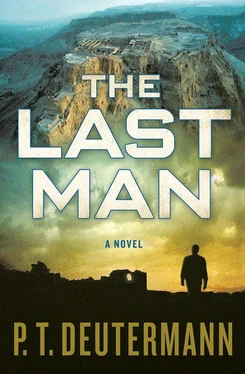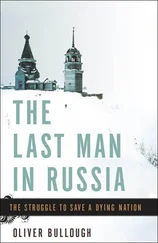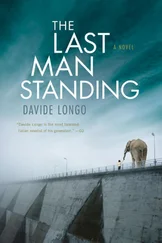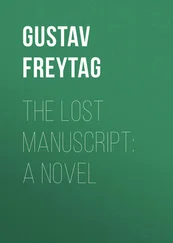ORCHARD AREA, the sign’s title read. “In this area is believed to be the location of an olive or fruit tree orchard, sited here because the low ground would capture the occasional rainwater that came once or twice a year to the mountaintop. Several other parts of the plateau were believed to have supported cultivation in ancient times.”
Well, now, David thought. So the archaeologists confirmed that rain runoff, however infrequent, would end up down here. That pool, however, would not hold much water. Why had they surmised an orchard of some kind and not a cistern? He tried to recall the data image. Where he was standing should be very nearly right on top of the eastern edge of that cavity, with the bulk of the cistern actually lying under the amphitheater-shaped ground that rose behind him toward the western palace. He turned around and looked up the slope. From here, the focus point, the slope was easily discernible, especially in the bright light of day. So if there was a cistern under here, where would the inlet be?
He looked around to see if anyone was watching, but the tourists had all moved up the hill, panting security guards in tow. The cable-car wheels were rolling again, meaning another load was inbound. He walked over to the casemate walls and stepped through a hole in the crumbling brickwork, down into the shadow of the corridor running down between the inner and outer walls. Here the roof had been reconstructed. Once the next load of tourists had disembarked and the car started down, he walked back out into the sunlight, notebook in hand, studying the ground. From the sounds of them, these tourists were Americans. He turned his back on them, hoping no one would come over, and ambled slowly around the area. He looked to see if there were any traces of the explosive source, but nothing was visible in the hot dust.
There had been no hole in the bottom of the dry pool, and there was nothing but rubble, battered square stone building blocks, patches of gravel, slate-flat stone, and the foundations of the Byzantine-era buildings. The only anomaly was that strange low wall that hooked out from the casemate walls.
He walked over to the wall again and, after looking around first, kicked at it absently. Solid, ancient rock. If sheets of rainwater were flowing down this hill, he mused, what would this wall do? It would keep that water away from the casemate wall foundations, which he suddenly realized were slightly lower than the surrounding ground. Okay, he thought, I can understand that, but it means the water would be diverted to, well, to the foundations of the Byzantine enclosure and that damned pool.
He walked back over to that ruin and stepped over the foot-high foundation walls. The enclosure was about seventy feet by thirty, shaped roughly in a rectangle, except that the wall on the southern end of the rectangle was curved and was also incomplete, as if to allow vehicles or perhaps animals to be driven inside. He realized he needed to see it from above, so he walked over to the cable-car platform, past a pile of steel scaffolding pipes, and climbed up the twenty steps to the loading and unloading platform. Looking down the drooping cable, he could see a small crowd getting into the car at the tourist center, a half mile distant. He pretended to be sketching in his notebook in case anyone was watching from the tower down below.
He turned around and looked down at the Byzantine enclosure, confirming the notion that the southern end was open for a reason: There was no hint of a foundation wall in the smooth rock surface at that end. Staring up the shallow slope, he tried again to visualize where the water would go. It would sweep across and down this hill, divert along that odd-shaped low wall, into the shallow pool, and then — what? Where would it go? He suddenly realized, from his perspective above the ruins, that the water would then sweep all the way around the Byzantine enclosure, which he saw now was shaped like a drain. It would have to end up inside that building, if indeed it had been a building. Maybe there had been another pool of some sort, not like one of the fancy Roman-style baths up in the two palaces but a watering hole, perhaps for livestock.
He climbed back down off the cable-car tower and walked back over to the casemate walls on the eastern side of the Byzantine enclosure. It was getting really hot now, the sun blazing over the Dead Sea like a malevolent furnace. There were several smaller cisterns cut into the eastern and southern rim of the mountain, so maybe the water filled the pool and then was diverted to a central channel to fill them. Studying the ground, he finally found what he was looking for: two dirt-clogged drain holes, about a foot square, leading under the inner casemate wall. He walked back to the opening he had used before, turned left, and went back down the casemate corridor until he found the two channel openings. There were no channels in the floor. Pipes, then? He looked harder. The floor was discolored. He poked at it and discovered that there were two channels, long since packed with hard dirt, running across the corridor and through the external wall. The dirt was packed hard enough to look and feel like stone.
Looking over his shoulder again, he walked over to the nearest arrow-slit aperture and looked out and down. Below was the steep slope up which the Serpent Path cut its zigzag pattern. He could see where the runoff channels came through the outer wall, and beneath that point there was an erosion notch in the hillside. Was there a rim cistern down there?
Excited now, he walked north along the rim, staying inside the casemate corridor, and back to the eastern gate. There he paused, standing in the shadow of the gate vestibule. He scanned the surrounding area to see where the two security guards were. They were still tagging along behind the German tourist group, now talking to three of the girls. David slipped out the gate and walked down the stone steps, stepping down onto the flat area on the hillside that ran directly beneath the fortress walls. The Serpent Path stretched away in the first of its switchbacks leading down the mountain. Overhead the cable car squeaked and groaned as it neared the tower landing at the summit. He waited close by the walls until the empty car had started back down. He realized now he had to be in full view, or almost so, of the observation post below. Actually, not quite: A shoulder of the hillside would block their view of him as along as he stayed close to the bottom of the exterior casemate wall. Fifty feet down the Serpent Path, though, and they would be able to see him, but he didn’t need to go down: He needed to climb across the base of the wall to that notch.
Proceeding very carefully, he did a hand-over-hand act along the bottom of the crumbling wall. The stones were already hot to the touch. With no path, the footing was very treacherous, and twice he felt himself starting to tumble down the hillside, only to stop the incipient slide by grabbing one of the scraggly bushes growing along the wall. It took him fifteen minutes to eke his way over to the notch, and he had to scuff a small level area in the dirt and sand so that he could stop there. He took one last look down the escarpment to confirm he was still out of the guard tower’s sight line. Then he knelt down and looked inside.
When his eyes adjusted to the shadows, he saw a small cavelike opening in the base of the wall. Looking at the walls, he realized it was a man-made cave, probably the remains of a rim-wall cistern. It was bone dry, like all the other cisterns, and no more than twenty feet in diameter. He could tell that it was man-made because of the obvious tool marks in the stone near the entrance. The floor of the cavity was almost level with the opening in the hillside and sloped down from back to front. There was a small patch of grayish light coming from a tiny aperture up above, no bigger than a handhold. There were no steps per se at the opening, but the dirt and gravel that had fallen through the opening provided a loose ramp, and, looking around one last time, he let himself into the cistern.
Читать дальше












